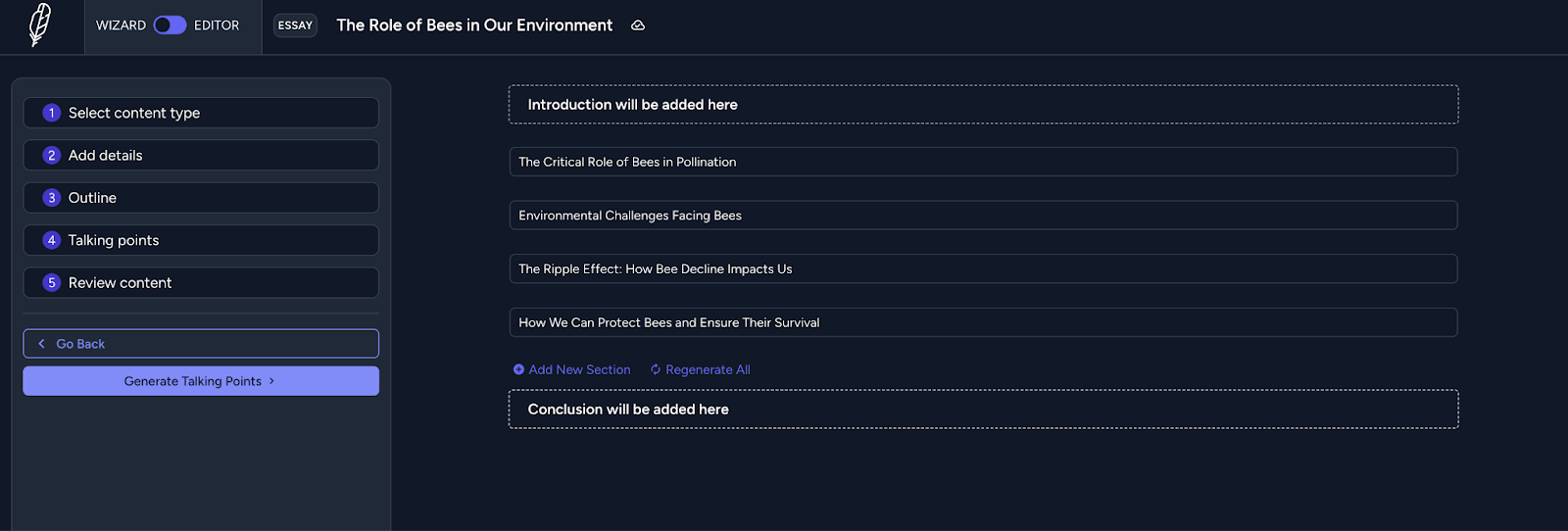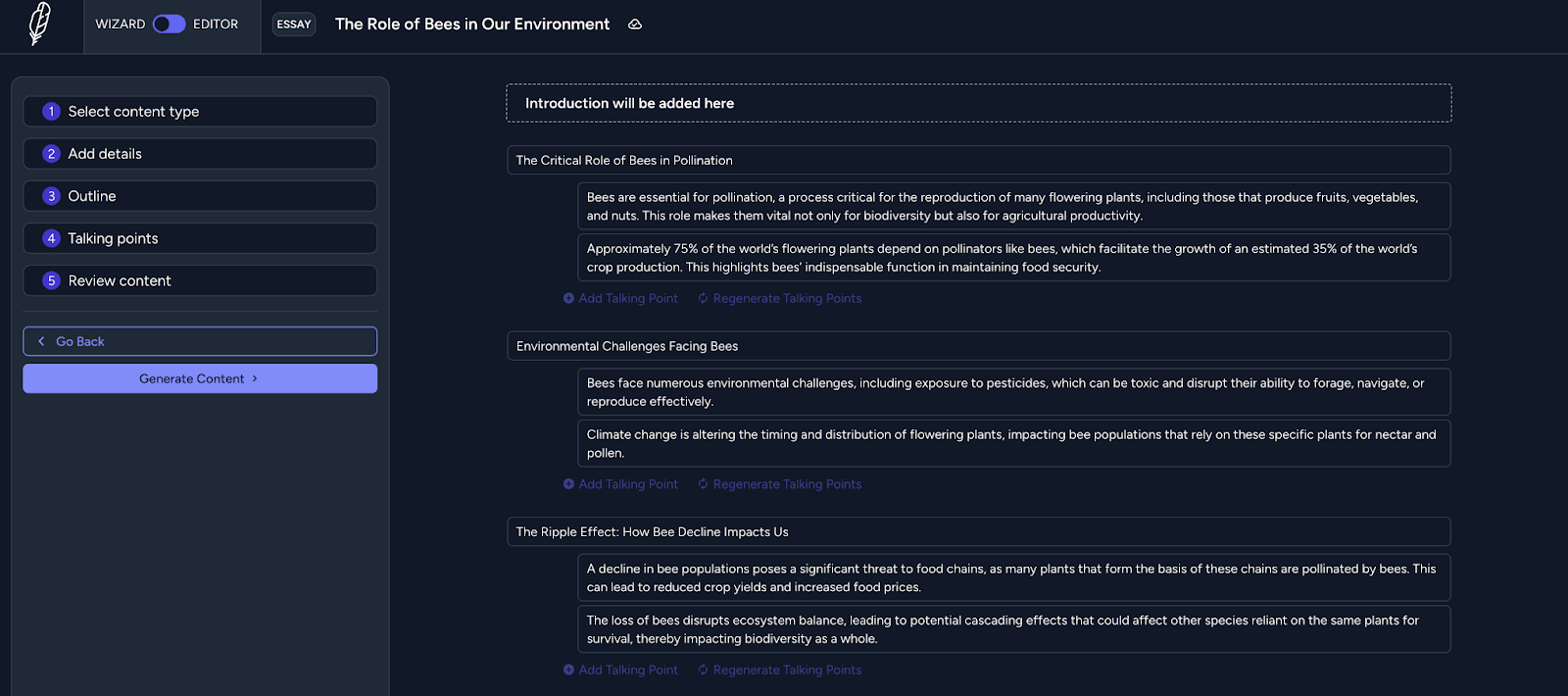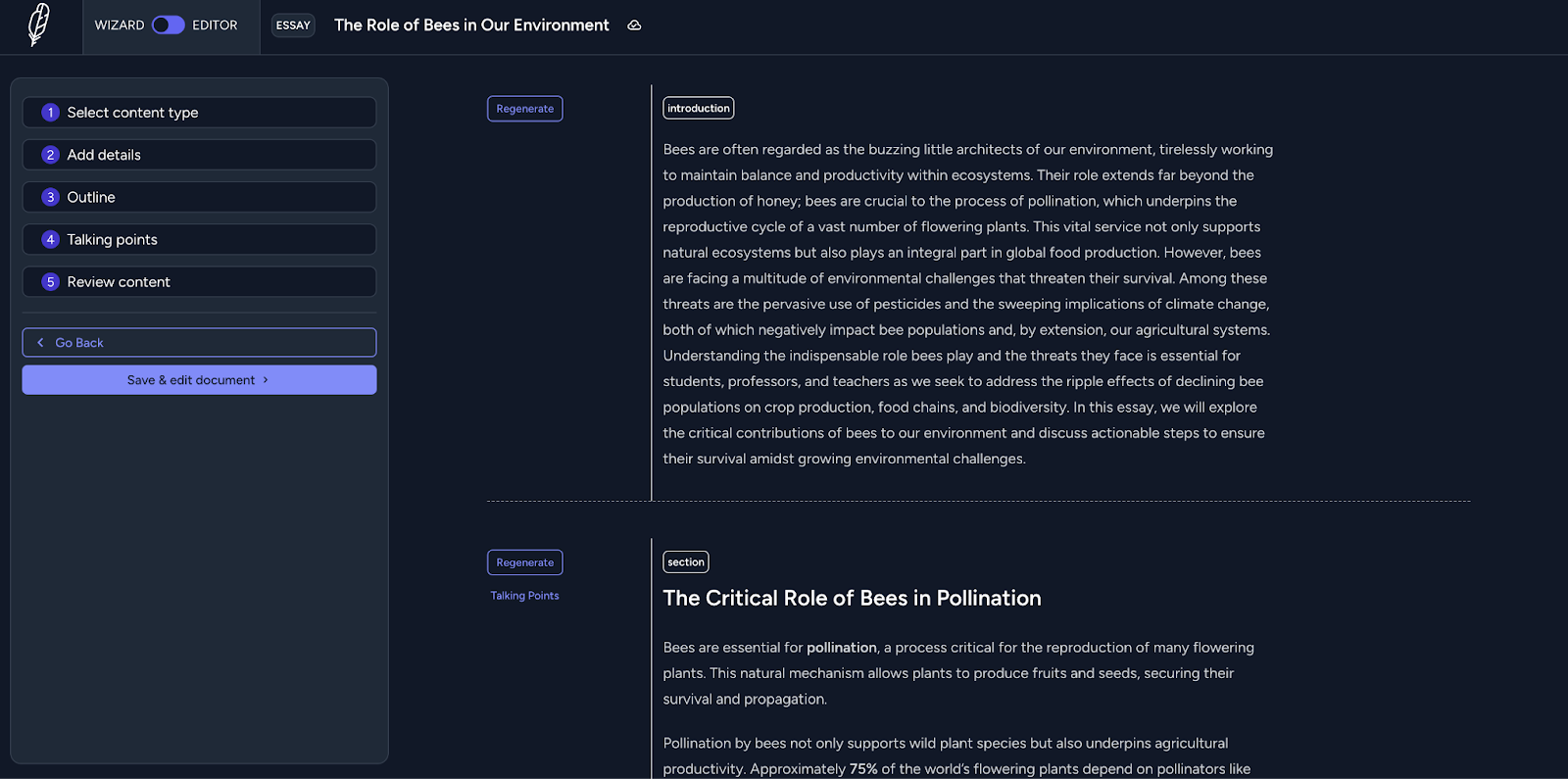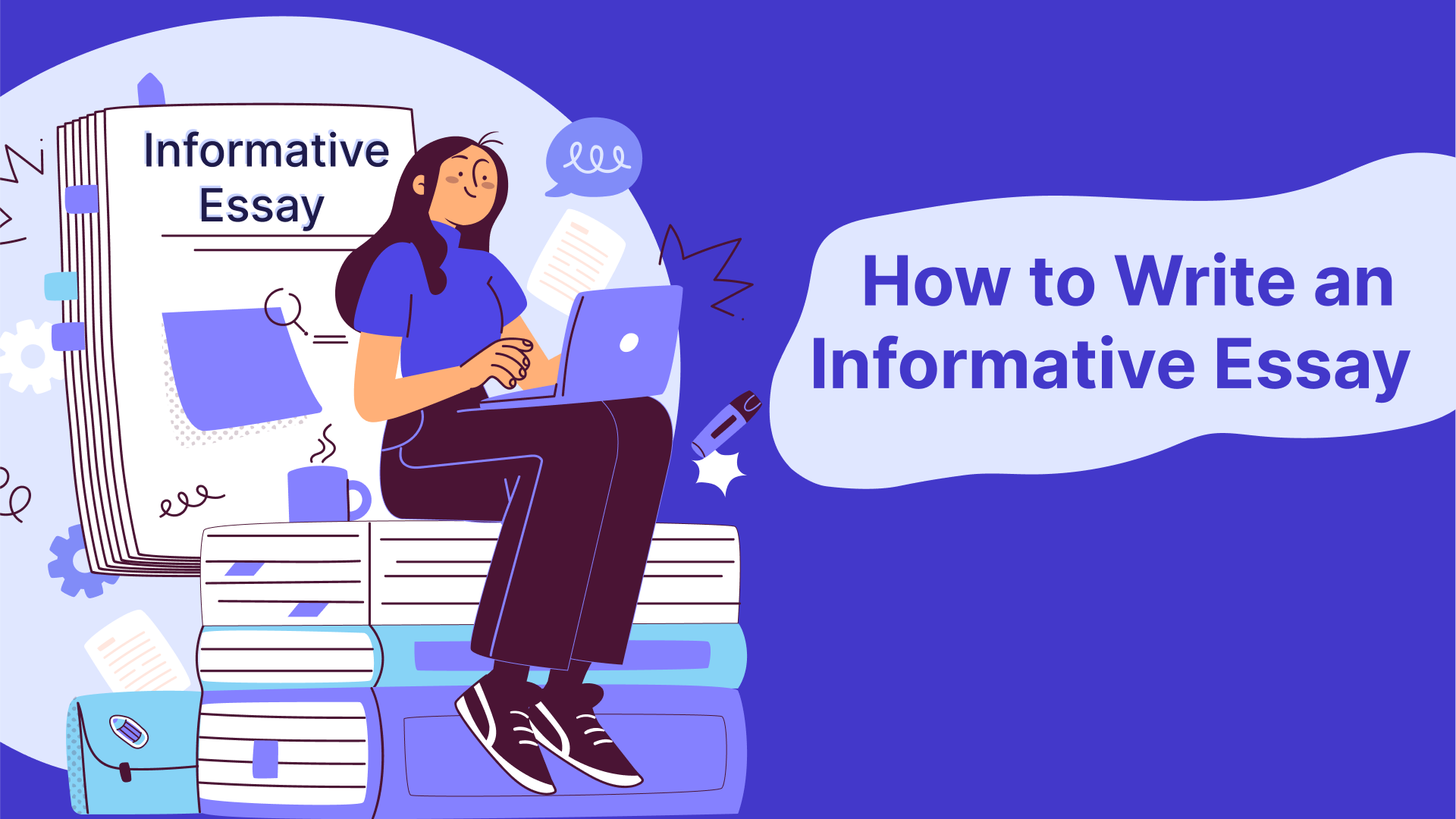An informative essay is a common assignment for students in middle school, high school, and college. It’s all about explaining a topic clearly and sharing important information. But for many students, writing an essay like this can be tricky. There’s a lot to think about like research, organizing ideas, and making sure the essay is easy to follow.
Sometimes, it’s hard to know where to start or how to structure the essay. This can feel stressful, especially if you have other assignments to finish.
Don’t worry, though. This guide will help you understand how to write an informative essay step by step. It’s simpler than it seems once you know what to do.
What Is an Informative Essay?
An informative essay is a type of academic writing that explains a topic clearly and without bias. Teachers and professors assign it to high school and college students to help them develop the skills of researching, organizing ideas, and presenting information in a structured way.
The purpose of an informative essay is to educate the reader with facts, data and evidence. What makes it different is that it doesn’t include the writer’s personal opinions—just well-researched, objective information. These essays answer questions like “what,” “why,” and “how” and make complex topics easier to understand.
For example, an informative essay might explore how photosynthesis works, the history of the internet, or the benefits of regular exercise. Here are some examples of potential topics:
The Benefits of Regular Exercise for Mental and Physical Health
The Role of Renewable Energy in Reducing Carbon Emissions
The Impact of Social Media on Modern Communication
Informative Essay Outline and Structure
Informative essays are easier to read if they follow a clear structure. Let us analyze it in 3 parts: introduction, body, and conclusion.
Introduction - First Section of an Informative Essay
In this section, you gain the interest of the reader and explain what your essay is focused on. To begin, write an attention-grabbing statement. In this case, let us assume that your theme is the impact of bees on the environment, you can start your essay like this:
Example:
“Did you know that one-third of the food we eat depends on pollination by bees?”
The opening statement should be followed by some background information. You should describe the topic in detail and provide context for readers to understand the topic in depth.
Example:
“Bees’ input is crucial for the growth of fruits, vegetables, and nuts, which form a great part of our diet. Without bees, the ecosystems will not be able to sustain, which will lead to serious food production challenges globally.”
Finally, you should end your introduction with a clear thesis statement. A thesis statement is a single sentence that sums up the main idea or purpose of your essay. It acts as a roadmap, telling the reader what to expect in the body of the essay.
Lastly, you should end the introduction with a precise thesis statement. A thesis statement is concise and defines the aim of the essay in a single sentence so that the reader knows what to expect in the body paragraphs.
Example:
“This essay will explain the critical role of bees in pollination, the threats they face, and how protecting them is essential for our food supply and ecosystems.”
Body - Second Section of an Informative Essay
Your evidence, including facts and data, should be included in the Body section. It is generally divided into 3 or more sub-sections or paragraphs. Each of the paragraphs is centered on one idea.
Paragraph 1: Main Idea
State your first main idea that you wish to elaborate on and supplement on with facts, data, and evidence. For instance, when talking about bees, one of the first things that can be discussed is their involvement in the process of pollination.
Example:
“Bees are known to be crucial pollinators for more than three-quarters of blooming plant species across the globe. They also pollinate a variety of crops which are important for human consumption. For example, farmers in California grow almond trees and these trees greatly depend on bees for pollination. If there are no bees then the California almond industry which is worth 5 billion dollars, will not exist.”
Paragraph 2: Main Idea
In the second paragraph of your essay, you should examine yet another aspect of the topic. For the example of bees discussed above, the next discussion point could be about the challenges they encounter.
Example:
“Bees have some significant problems that put their crop pollination capability in danger. Pesticides for example may kill or confuse bees enough not to remember how to navigate back to their hive.”
Paragraph 3: Main Idea
And finally, use the third paragraph to address a broader perspective or discuss solutions. Continuing with the topic of bees, you could explore how people can help protect them.
Example:
“Planting bee-friendly flowers, reducing pesticide use, and supporting organic farming practices are all effective solutions. For example, an initiative in the United Kingdom called ‘Bee-Friendly Farming’ encourages farmers to dedicate part of their land to wildflower meadows, resulting in a 30% increase in local bee populations.”
Conclusion
If you are now already contemplating how to write and structure the conclusion, then give yourself a pat on the back as you are almost there with your essay.
This is the section that wraps everything up while emphasizing the topics at hand. Highlight the main concepts without adding anything new.
Example:
"To summarize, bees are crucial in the process of pollination which enables the growth of important crops and makes sure that the ecosystems remain in balance. Unfortunately, bees are struggling with a loss of habitat as well as pesticides and the effects of climate change, which puts food security on the world at risk.”
When constructing the conclusion, depending on the topic, you should build a strong closing statement or a call to action.
Example:
“Saving bees is more than just saving one species; it is saving the entire planet. We all have an opportunity to make a positive impact by expanding conservation efforts, refraining from using harmful pesticides, and planting plants that are defensive to bees.”
This is a concrete way of structuring your essay. This means that if you adhere to this structure, your readers will be able to grasp the subject matter and enjoy reading your essay. Don’t forget to use engaging examples. They will guarantee that your essay is memorably informative.
How to Write an Informative Essay Using GetCopy AI
Now that you’ve learned about the structure of an informative essay, you’re finally ready to write your own.
However, we understand that high school and college students often have too many assignments to complete in a short period of time. That’s why we’ve developed GetCopy, an AI essay writing tool that helps students write essays on various topics with ease.
Our purpose is simple. We want to support students in managing their workload and improving their writing process.
However, we encourage all students to do thorough research to ensure their essays meet the required quality standards.
Step 1: Understand the Purpose of Your Essay and Do Research
Before you start writing your essay, you should understand the purpose of your essay. Ask yourself the following questions:
What information do I want my readers to take away?
What impact do I want to make on them?
How do I want to affect their thoughts with this essay?
An informative essay isn’t just about sharing facts. Think about the message you want to communicate and the impression you want to leave. For example, in an essay about bees, your goal can be to educate readers about their critical role in pollination and inspire them to care about protecting bee populations.
When you define the purpose, you should start doing research. You need to find credible sources such as academic journals, reputable websites, books, and government publications.
For example, in your essay about the role of bees in pollination, you can research studies from environmental organizations or agricultural research institutes.
Step 2: Enter Essay Details in GetCopy AI
Now that you have a basic understanding of the structure and purpose of your informative essay, you can use GetCopy AI to help you write the actual content.
To get started, log in to your GetCopy account and follow these steps:
Create a New Document: Click “New Document” to select the “Wizard Document” option.
Select the CorrectContent Type: Under Content Types, you’ll see several types of content that GetCopy offers - Literature Review, Research Paper, Personal Statement, Blog Post, and Speech. However, you need to select the “Essay” option for writing an informative essay.
Enter Document Details:
You need to enter the title of your essay. For demonstration purposes, we named our document The Role of Bees in Our Environment.
Provide details about the essay topic, such as The Role of Bees in Pollination and Environmental Challenges Affecting Them. Mention keywords like “pollination,” “crop production,” “food chain,” “pesticides,” and “climate change.” Also, specify the target audience, such as high school or college students.
Set the tone of voice of your essay. For an informative essay, select the “Informative” option among the suggested ones.

Step 3: Create an Essay Outline
Once you click the Generate Outline button, the tool will create the main headings for your essay. The introduction and conclusion are added automatically, and alongside these, the tool suggests additional headings to cover key aspects of your topic.
The best part is that you have full control over these headings. You can edit them, rearrange their order, add new sections, or even regenerate the entire outline if needed.
For example, in our article about bees, GetCopy AI generated the following key headings:
The Critical Role of Bees in Pollination
Environmental Changes Facing Bees
The Ripple Effect: How Bee Decline Impacts Us
How We Can Protect Bees and Ensure Their Survival

Step 4: Generate Talking Points
After reviewing the outline, click the Generate Talking Points button. This step provides a more detailed structure, breaking each section into specific points to guide your writing.
As a user, you have full control over these sections. You can edit the talking points, add or remove specific details, or even regenerate all the talking points if needed. If, at this stage you decide to add a new heading or remove an existing one, you can easily go back and make those changes.
You should carefully review the talking points generated by the tool. These points will directly influence the content of your informative essay, so if something needs improvement, you should polish and finalize everything.

Step 5: Review and Finalize Your Informative Essay
Based on the talking points, the tool generates the content for your essay. If you are not satisfied with the quality of a particular section, you can regenerate it for better results. Once you’re happy with the content, click the Save and Edit Document button to save the text in the editor.
In the editor, you can read through the text and make any necessary changes. You can manually edit sentences, add new information, or remove parts that don’t align with your vision. GetCopy Editor also provides a variety of tools to refine your essay. You can:
Make paragraphs longer or shorter.
Change the tone of the content.
Rephrase sentences.
Continue writing from a specific section.
Summarize parts of the essay for brevity.
Once all your edits are complete, the tool allows you to export your essay in Word or PDF format. You can also create a public link to easily share or access the content online.

FAQ
What are 3 parts of an informative essay?
An informative essay has three main parts: the introduction, the body paragraphs, and the conclusion.
How do I start off an informative essay?
Start with a hook to grab attention, add background information about the topic, and end the introduction with a clear thesis statement.
How do you write a 5 paragraph informative essay?
Write an introduction, three body paragraphs (each focusing on one main idea), and a conclusion to tie it all together.
What are easy informative topics?
Here are a few examples of easy, informative topics:
The Journey of Chocolate: From Bean to Bar
A Brief History of Video Games
Why Sleep Matters for Students
How Recycling Protects Our Planet
The Critical Role of Bees in Pollination
How long is an informative essay?
An informative essay is usually 500–800 words, depending on the topic and assignment requirements.

